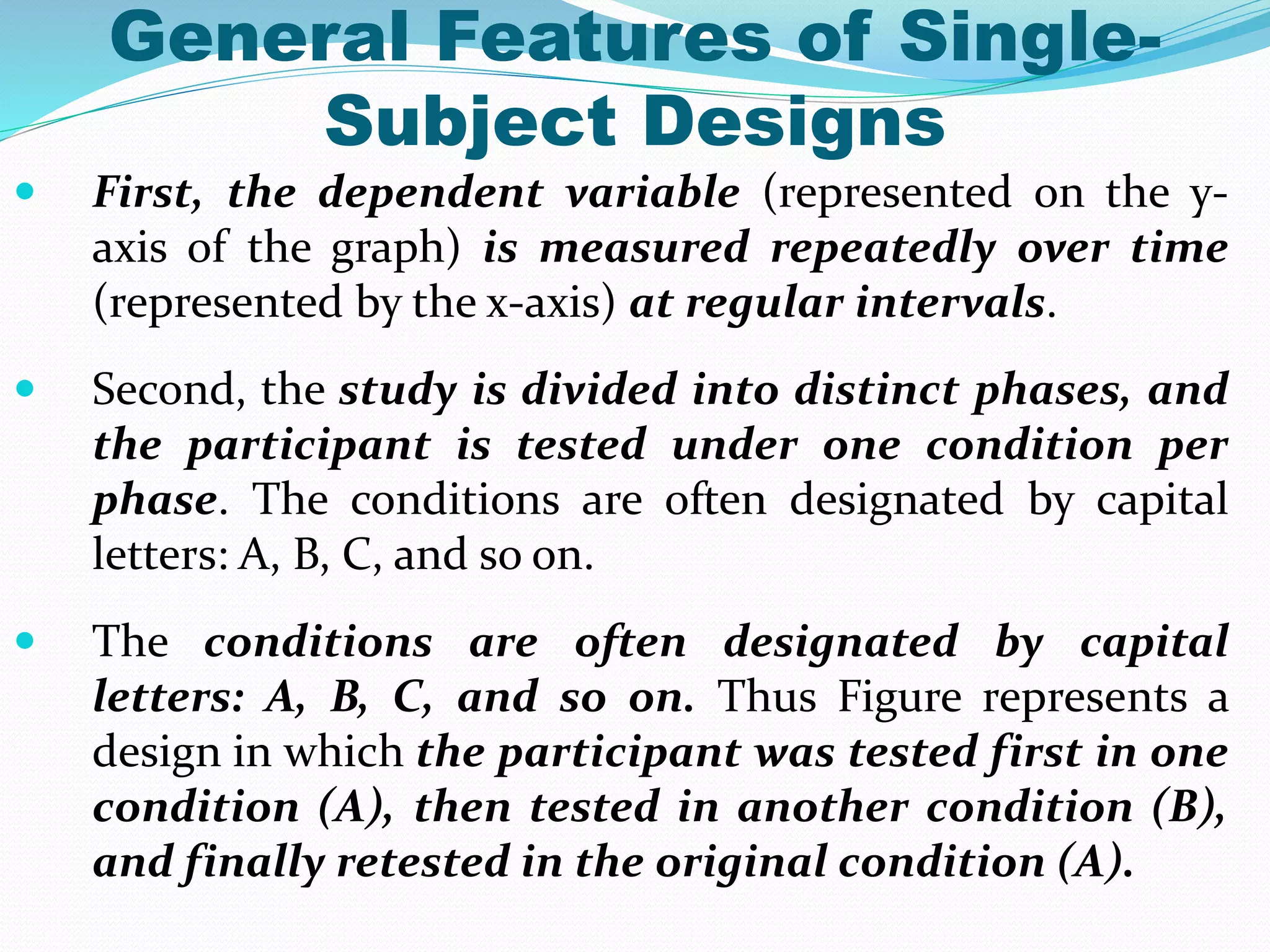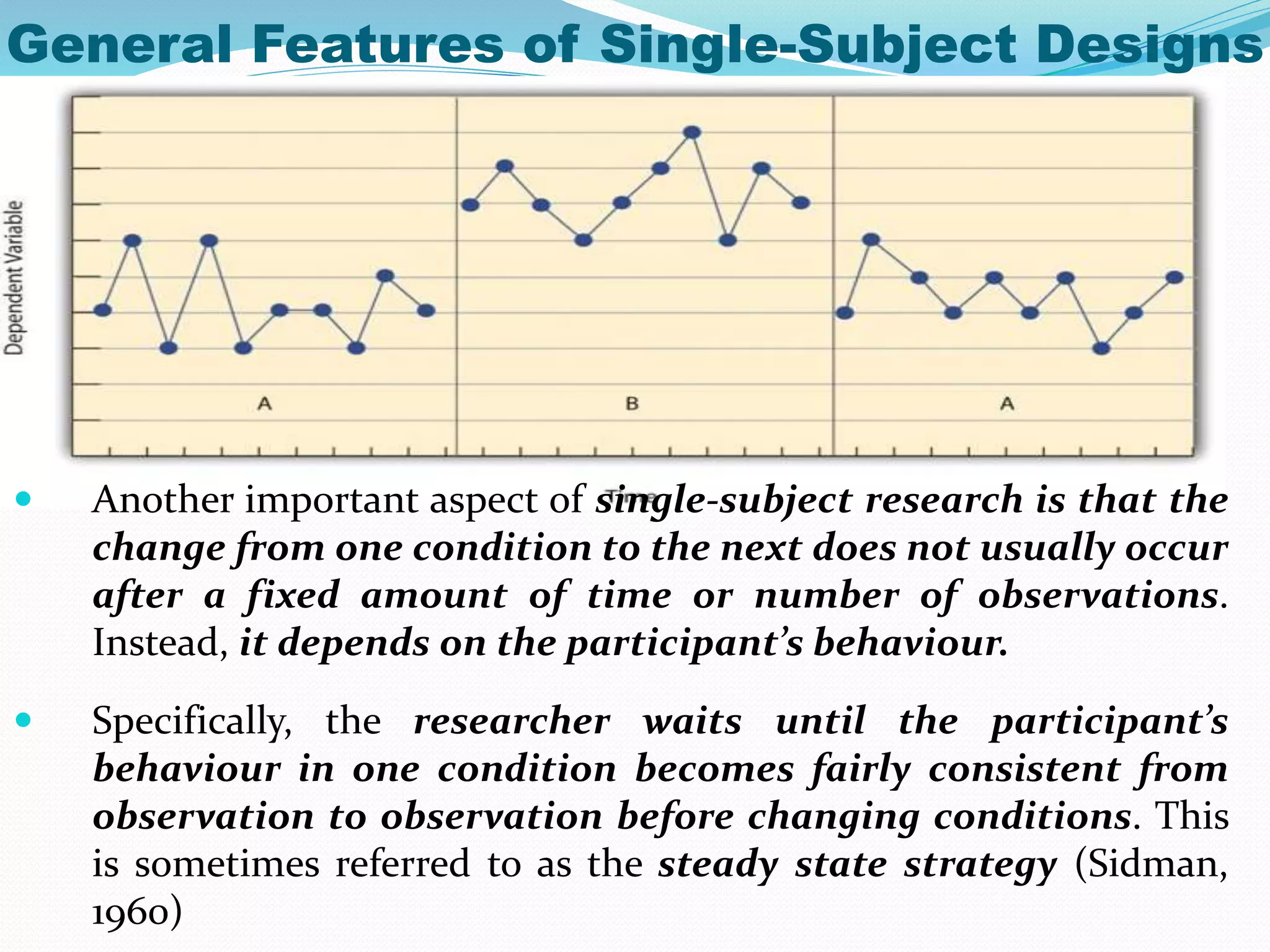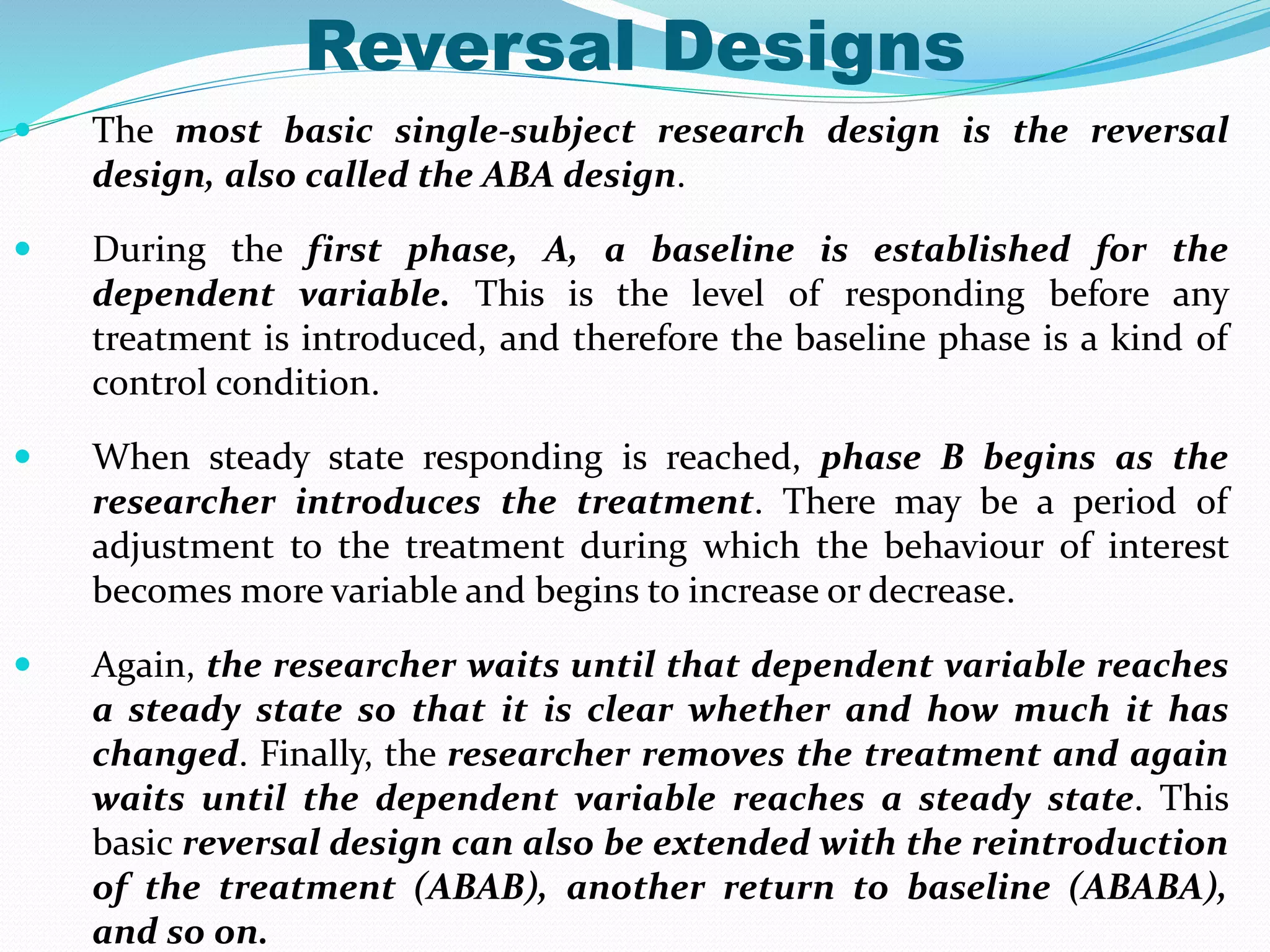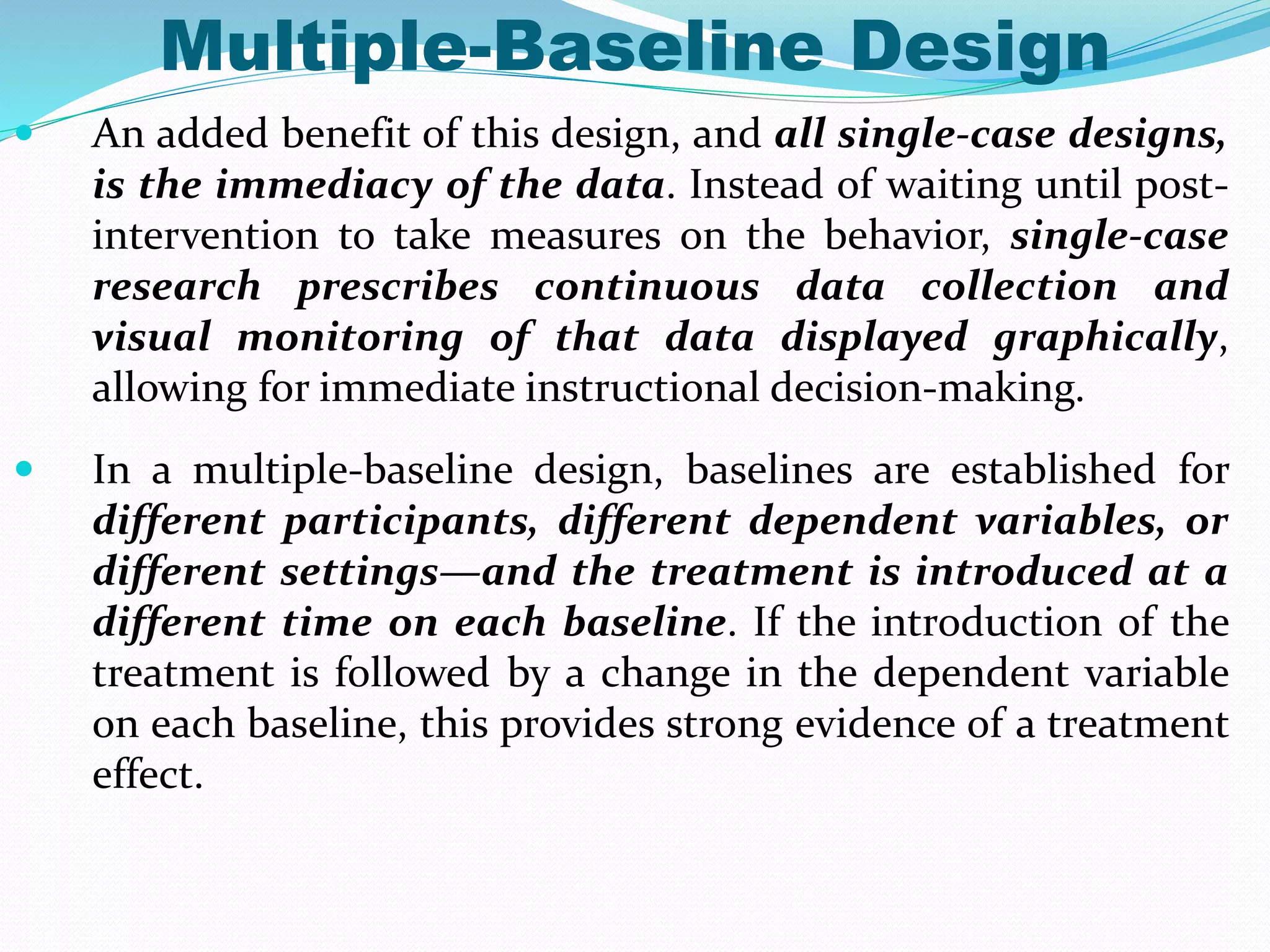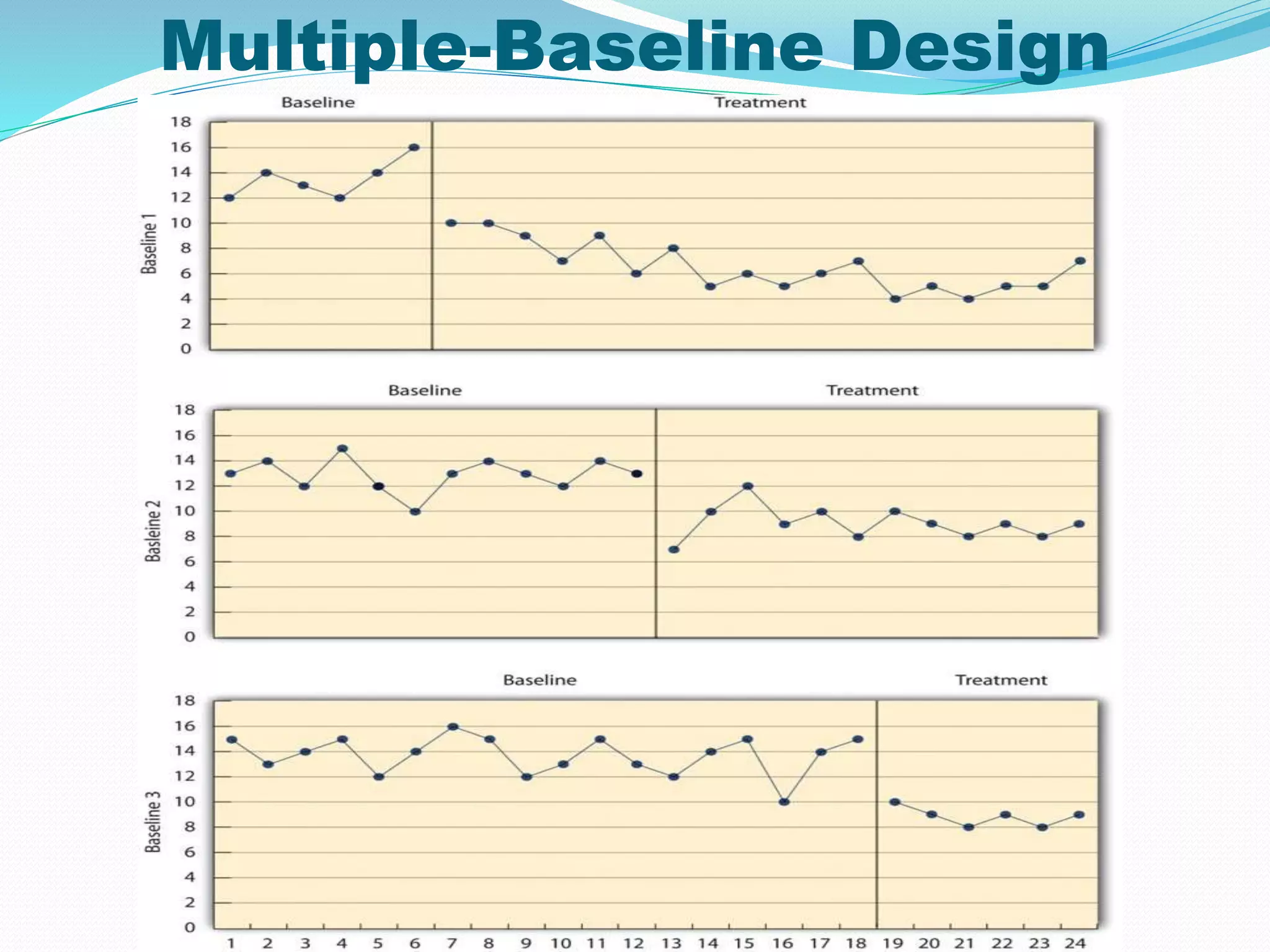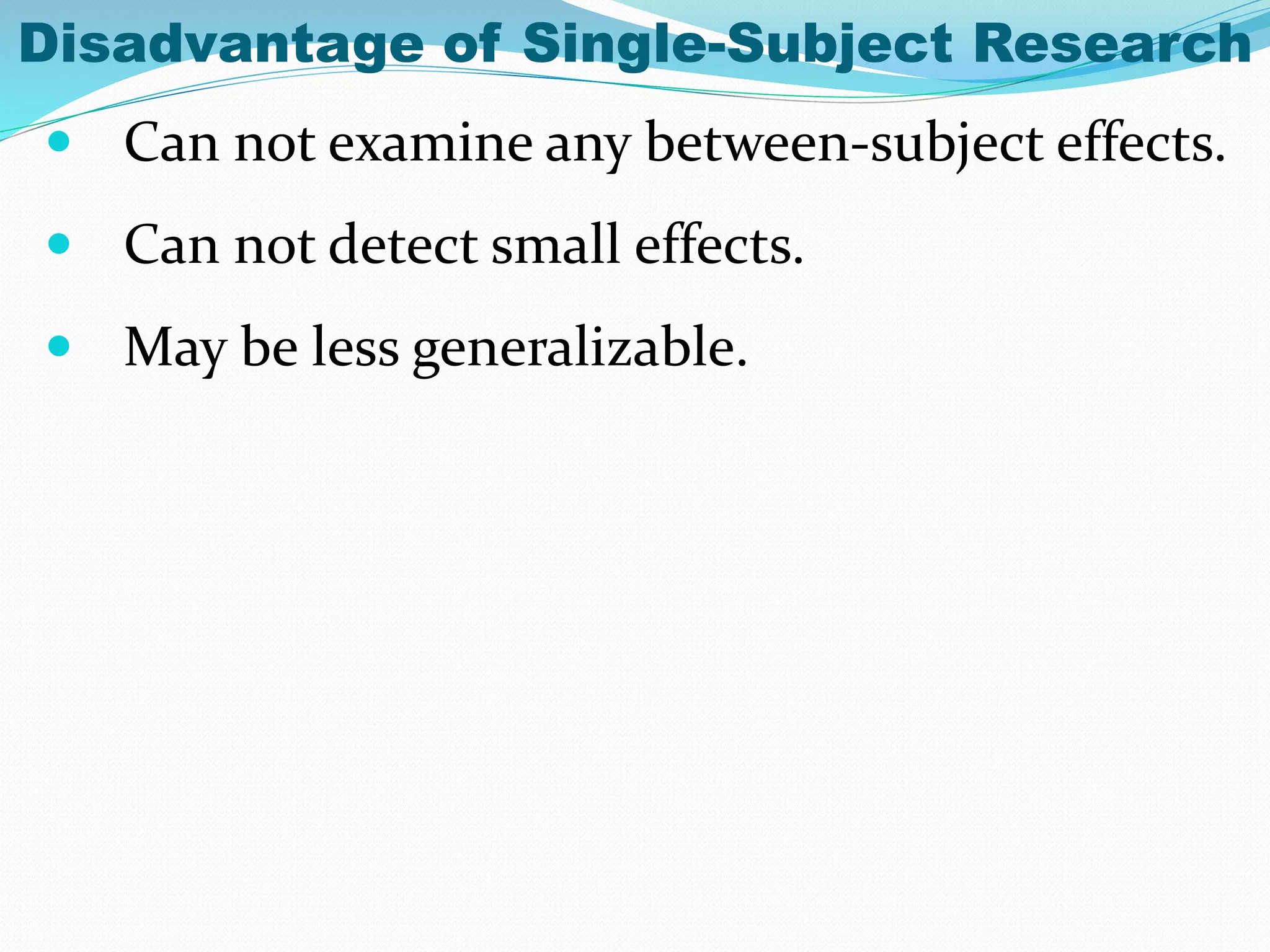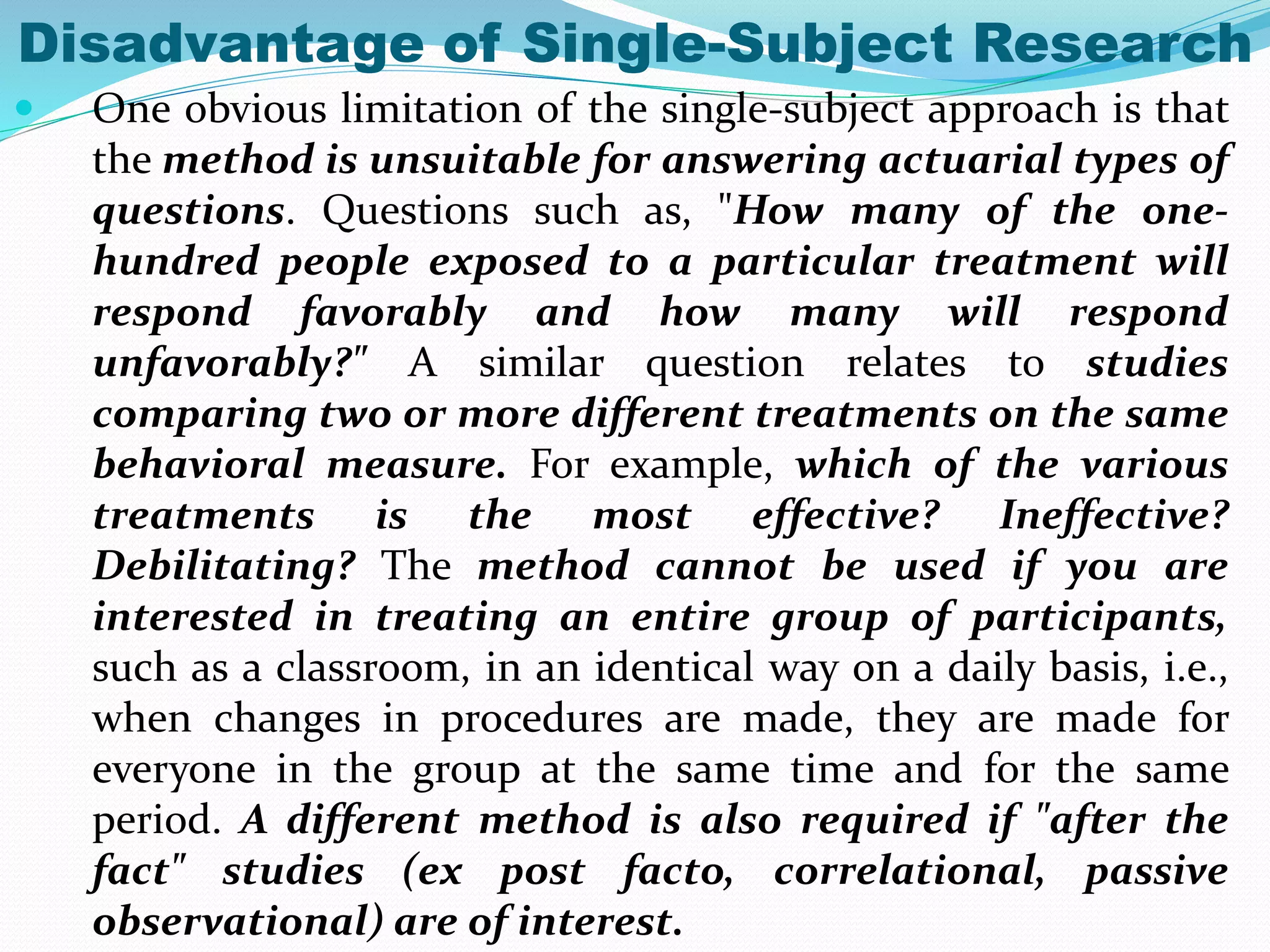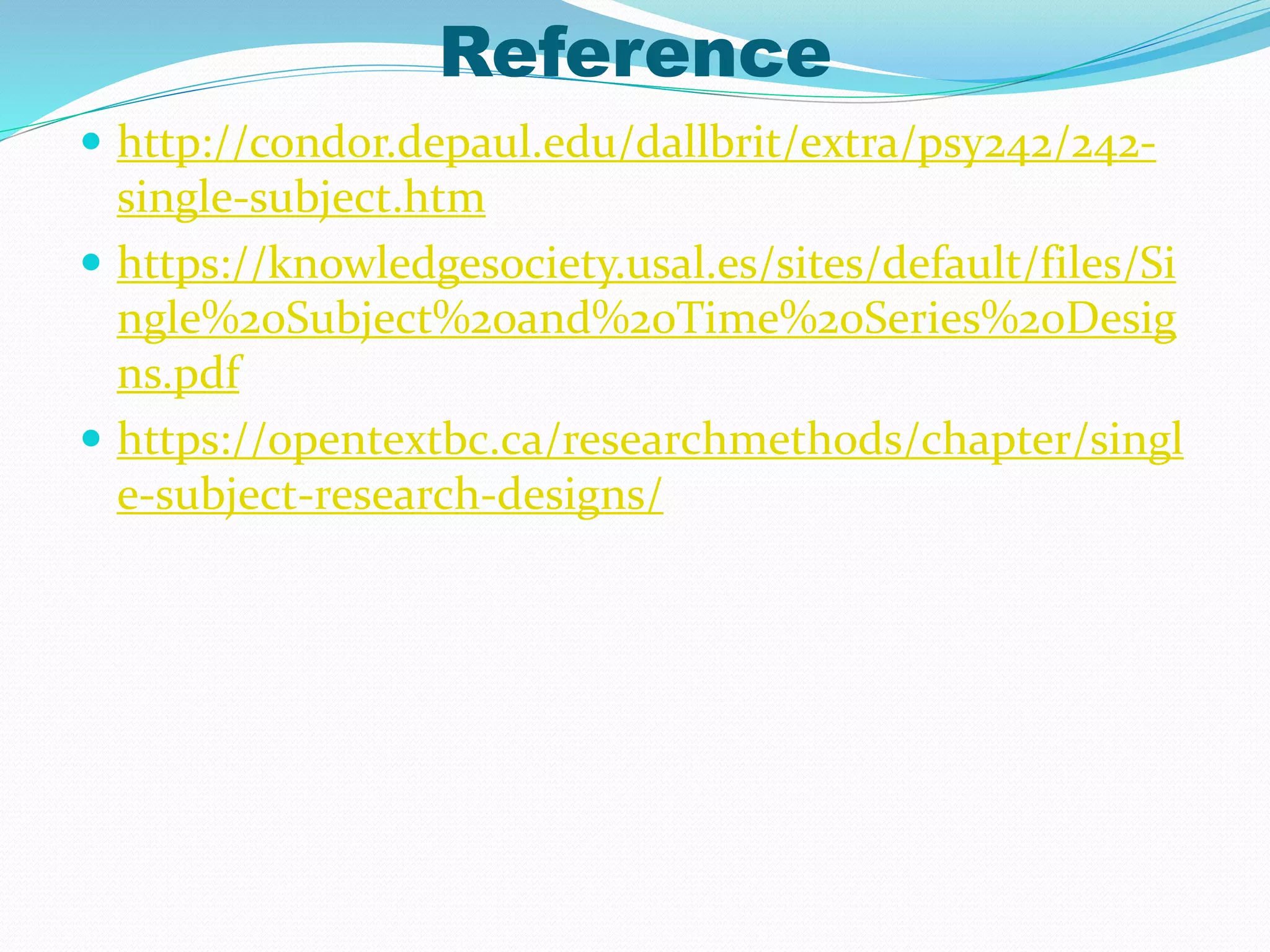Single-subject research involves intensively studying a small number of participants to focus on individual behavior over time. It has been used in psychology since its beginnings. Some key features include repeatedly measuring a dependent variable under different conditions designated by letters (e.g. A, B, C). Researchers wait for steady responding before changing conditions. Common designs are reversal/ABA designs where a baseline is compared to a treatment condition, and multiple-baseline designs where the treatment is introduced at different times across subjects, behaviors, or settings. Data is typically graphed and analyzed visually for changes in level, trend or latency. Advantages include flexibility, ability to see quick effects of treatments, and strong conclusions about variable control. Disadvantages include



